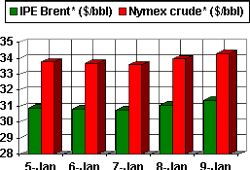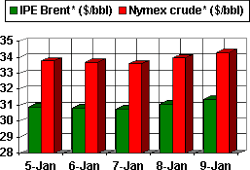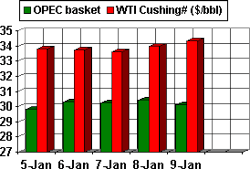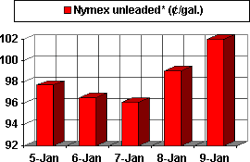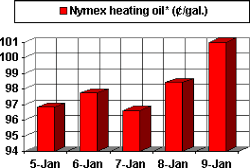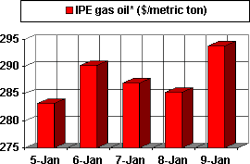China dominating oil demand growth outlook
With all the talk about oil supply growth in 2004, it may be easy to overlook the strong possibility that oil demand growth will outstrip expectations.
An indicator of that prospect can be seen with a quick glance at the International Energy Agency's monthly oil market reports (OMR) in 2003. In 7 of the 12 OMRs IEA released last year, the agency ratcheted up its forecast for oil demand growth from prior-month predictions. In 4 OMRs, IEA's forecast for oil demand growth was unchanged; in the remaining one, it whittled back the demand growth forecast because of the SARS pandemic.
Remember: None of these forecasts called for reduced demand year-on-year. All foresaw growth in oil demand, differing only in terms of degree. Even the most pessimistic one was subsequently reversed.
And the culprit in most of the upward revisions: China.
Only the beginning
That is only the beginning, according to J. Marshall Adkins, Houston-based analyst with Raymond James & Associates Inc. (RJA), St. Petersburg, Fla.
Consider the oft-told speculation about Chinese oil demand growth in the wake of rapid industrializationthe old tease that goes something like this: "What if everyone in China swapped his or her bicycle for an automobile?"
(It wasn't just the automakers who drooled over that prospect.)
Adkins contends such a transition is under way already. In fact, he sees China's unslakeable thirst for oil as one of the primary drivers for global oil prices for the foreseeable future.
"Not only has China's percentage of global [oil] consumption more than doubled in the past 14 years, but it also has an accelerating growth rate from a higher base," he said in a recent research report.
RJA projects that Chinese oil demand growth, in terms of volumes, this year will be more than double what it averaged during the 1990s. And it sees no let-up on the horizon.
"We estimate that China currently represents over 30% of world oil demand growth, even though it represents only 7.5% of total global demand," Adkins said. "If anything, increasing Chinese energy intensity is likely to drive both the percentage of total demand and absolute demand growth higher over the next several years."
Lagging production
This might all be moot were China also having the kind of explosive oil production growth Russia is experiencing. But in fact, Chinese oil output has remained flat or risen only slightly year-on-year since a nice little spurt in the 1980s.
And that means ever-rising imports of oil. RJA pegs China's net oil imports at 2.5 million b/d this year, vs. 2 million b/d last year and a mere 500,000 b/d in 1994. Put another way, Chinese oil imports are projected to rise from a level equivalent to 16% of US import levels today to an equivalent of more than 40% in 2010.
(That's even more impressive when considering the many forecasts that have US oil demand1.5-2%/year being bandied about the mostand net import levels continuing to rise, the latter both in terms of volumes and share of total supply.)
Adkins reckons China will account for one third of global oil demand growth this year, up from 18% in the 1990s.
All of which adds up to a heavyweight new player on the global oil markets, one "with the potential to use up the world's remaining surplus production capacity within a matter of years."
Adds Adkins: "If the global economy remains healthy for the next several years, then look outoil demand could easily outpace [the Organization of Petroleum Exporting Countries'] ability to keep up."
Meantime, what about that bikes-for-cars formula? The number of Chinese passenger cars jumped 70% in the first 10 months of 2003, according to a Wall Street Journal report, after climbing 50% in 2002. At this rate, by the end of the decade, says Adkins, China will have as many vehicles as the US has todayand that still would represent a car-to-people ratio of only 13:1,000 vs. 800:1,000 in the US today.
But if OPEC can't keep up with this juggernaut, the likely result will be much higher oil prices.
Then it might not be such a bad idea to own a used-bike concession in China.
(Author's e-mail: [email protected])
OGJ Hotline Market Pulse
Latest Prices as of Jan. 12, 2003
null
null
null
null
null
null
NOTE: Because of holidays, lack of data availability, or rescheduling of chart publication, prices shown may not always reflect the immediate preceding 5 days.
*Futures price, next month delivery. #Spot price.
